Apple Patenta la Smart Bike
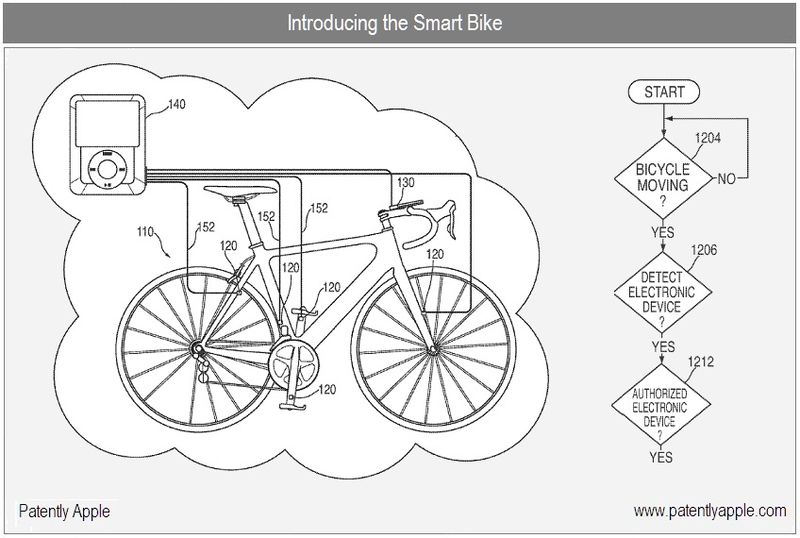
Apple ha patentado ideado un sistema que permite que todas las partes de la bicicleta proporcionen datos combinando el GPS, giroscopio y un acelerómetro proporcionaran dirección, velocidad, potencia, pendiente, altitud, ubicación, frecuencia cardíaca, la posición del desviador, la velocidad del viento, el recorrido completado y el ritmo. El sistema podría utilizar varios sensores integrados en el iPhone, además de trabajar con los sensores ya incorporado en la propia bicicleta.
Lo que me parece más interesante en la patente es que al parecer este gadget va a tener comunicación a través de red GSM y Wifi lo que va a permitir la informacion entre grupos y equipos de ciclistas mientras se va andando.
Lo que me parece curioso es que patenten una serie de cosas que ya estaban en uso, esta claro que hay cosas nuevas y que todo se integre en un iphone o una especie de iphone es increíble.
Aquí los dejamos con toda la patente en ingles ya que es algo extensa para traducirla.
Patent Summary
Apple’s patent is about using a new iPod or iPhone system primarily on a bike so that they could share information with other cyclists riding in a group. It could also provide feedback to cyclists regarding their performance or the performance of other cyclists with whom they are riding.
In some embodiments, this could be applied to users of other types of vehicles (e.g., motorcycles, automobiles, or trucks) or other modes of transportation (e.g., walking, running, horseback riding, or transportation using any other animal). Although many features described in the patent could be in the context with a bicycle or cycling embodiment, it will be understood that the features or descriptions can be applied to any suitable vehicle or mode of transportation.
The control circuitry of the proposed system could be operative to determine at least one riding characteristic of the first bicycle, and receive, in real-time from each of the detected several electronic devices on other bikes, at least one riding characteristic of each of the plurality of bicycles. Riding characteristic could include at least one of speed, distance, time, altitude, elevation, incline, decline, heart rate, power, derailleur setting, cadence, wind speed, path completed, expected future path, heart rate, power, and pace.
In some embodiments, a sensor for use with an electronic device could be provided. The sensor could be coupled to a bicycle and include communications circuitry operative to pair with at least one authorized electronic device. The sensor could also provide control circuitry relating to security.
Overview of the Bicycle System
In Apple’s patent FIG. 1 below we see a schematic overview of an illustrative system (100) for providing riding characteristics to a user of a bicycle. The system could include bicycle 110, sensors 120, display 130, and electronic device (iPod or iPhone) 140. The sensors, display and electronic device could communicate via communications network 150 – which covers GPRS, CDMA, EV-DO, EDGE, 3GSM, DECT, IS-136/TDMA, iDen, LTE and/or others. The bicycle could include any suitable type of bicycle, including for example a road bicycle, racing bicycle, mountain bicycle, touring bicycle, BMX bicycle, electric bicycle, or any other suitable type of bicycle.
The Bicycle
The bicycle could include one or more sensors for determining the status of different bicycle components, or for monitoring the manner or environment in which the bicycle is operated (e.g., by monitoring characteristics of the user of the bicycle). The sensors could detect any suitable metric related to the use of the bicycle including for example speed, pace, acceleration, distance, time, incline, decline, altitude, torque, power generated, cadence, gear and derailleur settings, heart rate, calories burned, weather, and temperature.
Any suitable type of sensor could be used to determine one or more of these metrics, including for example a Hall effect sensor, a magnetic sensor, a strain gauge, a photo-electric sensor, an audio pick-up, a heart rate monitor (e.g., using a piezoelectric strip), an accelerometer, positioning circuitry (e.g., Global Positioning System, GPS circuitry), or any other suitable sensor.
The display could include any suitable type of display. In some embodiments, the display could include a removable display that could be coupled to the bike’s handlebars or in an iPod or iPhone armband. Alternatively, the display could simply be embedded in the handlebars of the bike itself.
Possible Bike System Displays
Apple’s patent provides us with a wild array of possible types of display that the bike system could use and some of them go beyond the iPod and iPhone. The display screen could include, for example, a liquid crystal display (LCD), light emitting diode (LED) display, organic light-emitting diode (OLED) display, surface-conduction electron-emitter display (SED), carbon nanotubes, nanocrystal displays, or any other suitable type of display that could be incorporated in or coupled to the bike.
Alternatively, the display could include a movable display or a projecting system for providing a display of content on a surface remote from the bike, such as a video projector, head-up display, or three-dimensional (e.g., holographic) display.
The Sensors
The sensor coupled to the bicycle as well as sensors built into the iPod or iPhone could gather information related to the user’s performance or ride. For example, the sensors, electronic device, or both could gather information regarding the forces applied by the user on the bicycle, the forces from the environment to which the bicycle is subjected (e.g., acceleration, Coriolis force, temperature, incline, or wind), the location of the bicycle, time and intervals during the ride (e.g., which could be used with position or acceleration data to determine speed), the user’s condition (e.g., heart rate) or any other suitable information that could be determined by one or more sensors.
The raw sensor data could be processed to generate riding characteristics reflective of the manner in which the user is riding the bike. Such riding characteristics could include, for example, acceleration, speed, distance, time or intervals of time between events, altitude or elevation of the bicycle, incline/decline during the ride, wind speed, location, path completed, expected future path power, force applied to particular bicycle components (e.g., pedals), cadence, derailleur setting, heart rate, calories burned, air time, falls, impacts received, jump height or any other characteristic or metric that could be determined from the output of one or more sensors or electronic device components and that could be of use to a cyclist. In some embodiments, riding characteristics could include the raw data provided by one or more sensors (e.g., the rotations per unit of time of the bicycle’s wheels).
Any suitable component or combination of components could process sensor data or other data to generate one or more riding characteristics. In some embodiments, data from different sensors could be used to determine the same riding characteristic, but with different levels of accuracy. For example, speed could be determined based on changes in position over time as determined by positioning circuitry (e.g., a GPS system of the electronic device), integrating accelerometer data over a time interval (e.g., an accelerometer as part of a motion sensing component of the electronic device), and based on wheel revolutions as calculated by a magnetic switch coupled to the fork or hub of the bicycle. In some embodiments, the information provided by each sensor or component could be combined to provide a more accurate perspective of a riding characteristic (e.g., a force applied to the bicycle, such as wind speed, can have different values based on the position of each of the sensors detecting the wind).
Collecting Data Regarding Riding Characteristics
Apple’s patent FIG. 3 is a schematic view of an illustrative display provided for controlling the display of information to a user. Display 300 could include any suitable option for controlling the information provided to the user. For example, the display could include Riding Characteristics option 302, Map option 304, Workout Option 306, Share option 308, and Messages option 310.
In some embodiments, the user could provide an instruction using an input mechanism associated with the display which could be embedded in or coupled to the display (e.g., one or more buttons, switches or a touch screen), or include an input mechanism remote from the display (e.g., a wired or wireless button or switch located on the handlebars near the brakes or shifters, or a touch screen or touch pad embedded in the handlebar grips).
An alternative method for hands free input could be using voice commands or audio commands via a microphone associated with the iPod or iPhone in an armband or helmet.
In some embodiments, riding characteristics could be provided based on the user’s environment or in response to detecting particular events. For example, if a riding characteristic exceeds a particular threshold (e.g., power is too low, or heart rate is too high), the riding characteristic could be provided to the user. As another example, if a riding characteristic reaches a milestone value (e.g., a best time, longest or fastest ride, steepest climb or descent); the riding characteristic could be automatically provided to the user.
Apple’s patent FIG. 4 is a schematic view of riding characteristics displayed to a user. Display 400 could include information associated with one or more riding characteristics. For example, the display could include progress bar 402 indicating the distance run relative a predetermined target (e.g., a workout target or the length of the current course being ridden), speed 404, time 406, heart rate 408 and cadence 410. The user could view other riding characteristics using any suitable approach, including for example by selecting the «More» option 420, and could view raw sensor data by selecting Sensor Data option 424. Alternatively, the user could access additional riding characteristics by scrolling the display.
While the displayed riding characteristics could reflect the current values, a user could wish to view the evolution of one or more particular riding characteristics, or view a previous value (e.g., determine highest speed during a sprinting workout). In some embodiments, the electronic device could select arrow option 412 associated with any of the displayed riding characteristics to view an evolution of the riding characteristics.
Apple’s patent FIG. 5 is a schematic view of an illustrative display for viewing the evolution of a riding characteristic. The display 500 could include representation 502 of the evolution of the selected riding characteristic. The representation could include any suitable representation, including for example a graphical representation (e.g., a line or bar graph). In the example of display 500, the evolution of speed along axis 503 is plotted along time axis 504. The user could customize the colors of the lines or bars to better reflect the user’s criteria.
Mapping, Video Recording and Publishing Your Bike Course
Just as in the Nike + iPod program, the user will be able to map their own bike courses on a map or view bike courses of other riders if you’re looking for a particular path in respect to distance or difficulty. Additionally, the patent points to the iPhone having the ability to retrieve directions (e.g., turn-by-turn directions) for accessing or following a route or course. The system may also one day work with services such as Google’s Street View that will indicate landmarks and so forth.
The patent also states that an iPhone or iPod could be used to automatically or in response to a user instruction, record video, audio, or take photographs reflecting the course, and geo-tag the generated media for publishing. The electronic device could also prompt the user to provide a review of the course for publishing to the remote source to further expand the resources available to all cyclists. Publication could take place automatically, or in response to a particular instruction from the user.
In some embodiments, the electronic device could instead or in addition access reviews associated with one or more proposed courses. For example, other riders could provide reviews (e.g., 1 to 5 stars) for proposed courses, and provide an indication of their level or riding expectations to provide context for the reviews (e.g., an expert cyclist can give an easy ride a low review, while a beginning cyclist can give the same ride an excellent review).
The reviews could include any suitable information, including for example one or more riding characteristics of the cyclists, road and weather conditions, traffic conditions, an indication of the danger of the ride (e.g., many cars, or sections prone to accidents), the difficulty of the ride (e.g., a long climb or a technically difficult mountain bike ride), elevation and incline information, and comments from difference cyclists (e.g., video, audio or written comments.
Apple’s patent FIG. 6 is a schematic view of an illustrative display of a map. The map could include a schematic representation, topological representation, photographic representation (e.g., satellite view), or any other suitable representation of a region. In the example of display 600, map 602 could include a road map with non-road regions, for example river 604 and park 606.
Apple’s patent FIG. 7 is a schematic view of an illustrative display for comparing a user’s riding characteristics to a workout goal.
Share Options for Teams
Apple’s patent FIG. 8 is a schematic view of an illustrative display for selecting cyclists with which to share riding characteristics. The user could access display 800 using any suitable approach, including for example by selecting a Share option. The display could include several selectable options for selecting other cyclists to form a team with the user. For example, display 800 could include Discover option 802. In response to receiving a user selection of the Discover option, the electronic device could monitor incoming communications for identifiers associated with other cyclists.
To further enhance each group’s ability to ride together, the electronic device could allow cyclists within the group to transmit and receive communications and to communicate with other people outside of the cycling group (e.g., friends or family at home). Each electronic device could be operative to perform any suitable type of communications operation, including for example text or visual messages (e.g., e-mail and SMS communications), audio messages (e.g., telephone communications), and combinations of these (e.g., video conferencing). Using these communications mechanisms, different riders in a group can more easily coordinate cycling strategies, for example in a race or team context.
The display shown in patent FIG. 11 above could include listing 1102 of different types of messages received by the electronic device, for example from different cyclists with which the user is sharing information. Each listing could include identifier 1110 for identifying the person from whom the message was received, message type 1112 and time or date received 1114. When the message is visual (e.g., not audio), display 1110 could include message preview 1116 for viewing at least part of the message at a glance from the display. If the received message is non-visual, the display could include message header providing information related to the non-visual message (e.g., the length of a new voicemail). The user could access a partially displayed message in its entirety, or access non-visual messages (e.g., voicemail) by selecting the listing associated with the message.
The user could use any suitable input mechanism for selecting a message to send or for generating a new message (e.g., typing text or selecting media to transmit as part of the message). For example, the input mechanism could include one or more buttons on the electronic device, the display, the bicycle, the user’s apparel (e.g., clothing or helmet), or another component that the user can actuate. As another example, the input mechanism could include a voice-actuated mechanism (e.g., voice selection of options, or a speech-to-text engine), a movement actuated mechanism (e.g., an accelerometer or other motion detection component), or any other input mechanism for providing hands-free inputs.
Apple credits Jesse Dorogusker, Anthony Fadell, Andrew Hodge, Allen Haughay, Jr., Scott Krueger, James Mason, Donald Novotney, Emily Schubert Policarpo Wood and Timothy Johnston as the inventors of� patent application 20100198453 which was originally filed in Q1 2009.
Notice: Patently Apple presents only a brief summary of patents with associated graphic(s) for journalistic news purposes as each such patent application is revealed by the U.S. Patent & Trade Office. Readers are cautioned that the full text of any patent application should be read in its entirety for further details. About Comments: Patently Apple reserves the right to post, dismiss or edit comments.fuente: http://www.patentlyapple.com




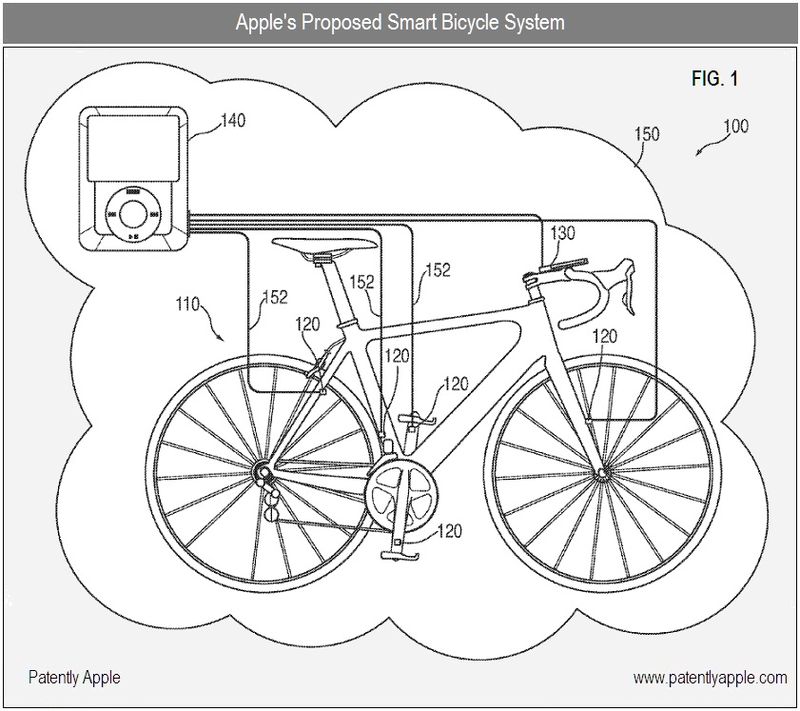
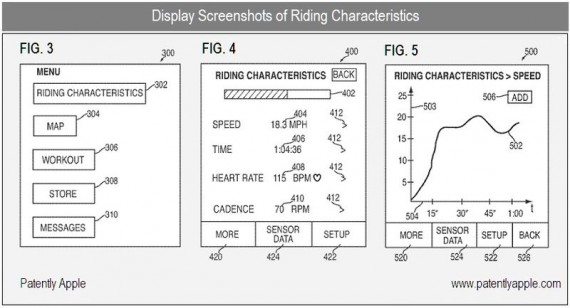
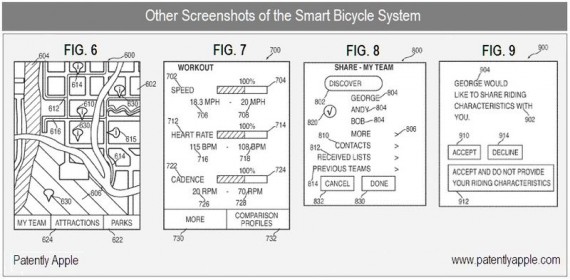
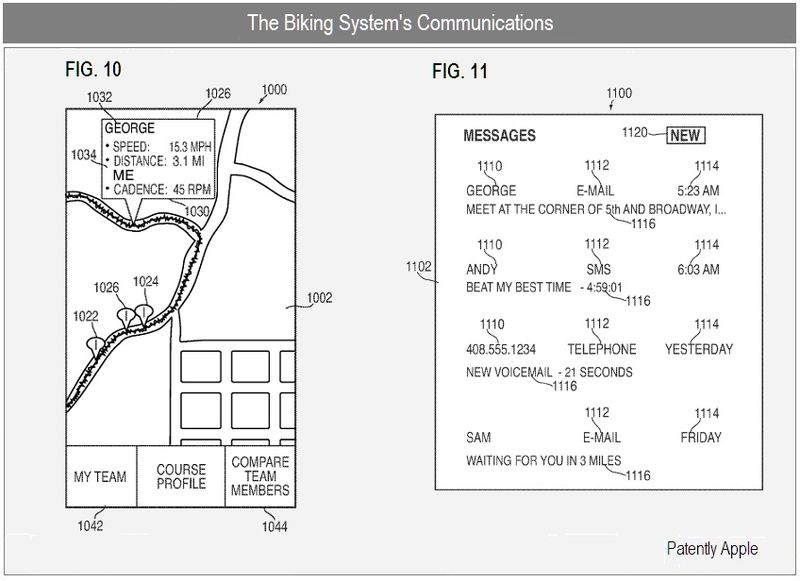
era cosa de esperar no mas!! alguna marca deberia hacer lo mismo que hizo NIKE con los ipods.
wena wena
Notable. Si solo tuviera iphone jajajaja pero ta bien bueno, y util el ehcho que peudas ocmbinar TODO en un solo aparato, que el telefono sea ipod y todos esto a la vez.
Excelente 😀
muy bkan el sistema aunque hay q tener el iphone chan
Exelente la idea , la única tranca que hay es que el gps sigue siendo superior porque no depende de una red telefónica para manejar la información.
buena, pero anda a caerte… pobre iphone…